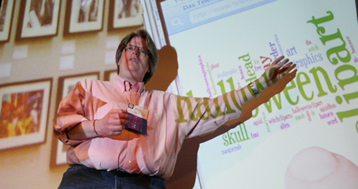In Search of Novel Ways to Design Large Cultural Heritage Websites 
Nicoletta Di Blas, Politecnico di Milano, Italy
Stefano De Caro, Italian Ministry for Cultural Heritage, Italy
Luigi Spagnolo, Politecnico di Milano, Italy
A Web site, in all domains and in cultural heritage in particular, is meant to support a variety of communication goals, like providing practical information, offering an “at a glance” understanding of what the permanent collections are about, supporting a pleasant and enticing exploration, allowing the user to locate a specific piece of content, as well as promoting the institution’s brand, some selected pieces of content (shop-window effect), etc. As long as the site is small, “traditional” information architecture can cope with these needs. But when the site gets large and information-intensive, the traditional structure starts “cracking” as layers upon layers of navigation are added, and disappointment becomes a common user experience. Straight search engines have provided a reasonable solution to support just one of the above goals: allowing the user to locate a specific piece of content.
In this paper we illustrate how Rich Internet Applications (RIAs), combining lightweight information architecture with advanced search paradigms (like faceted search) and interactive visualization strategies, can be used to better support a number of communication goals. The examples are taken from the new Web site for the Directorate General of Antiquity of the Italian Ministry for Culture Heritage (to become public in Autumn 2010), where both a huge amount of content (the Italian archeological heritage) and a variety of users’ profiles (from scholars to amateurs and tourists) are managed.
Session: Actionable Research [research]
Keywords: information architecture, exploratory search, faceted search, Web design methodologies, rich interface applications, findability
